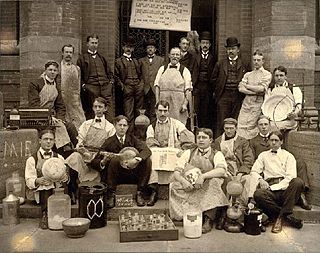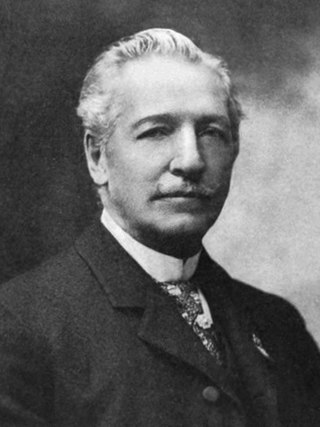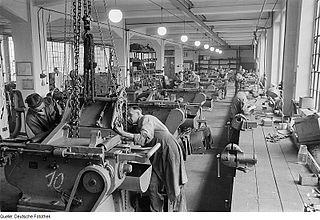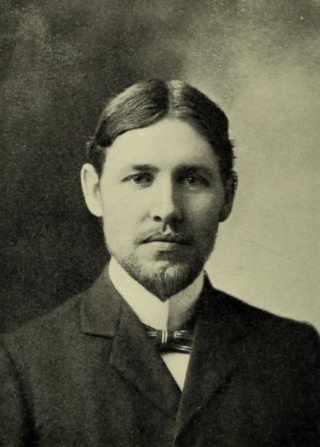Related Research Articles

Eli Whitney Jr. was an American inventor, widely known for inventing the cotton gin in 1793, one of the key inventions of the Industrial Revolution that shaped the economy of the Antebellum South.

Sir Joseph Whitworth, 1st Baronet was an English engineer, entrepreneur, inventor and philanthropist. In 1841, he devised the British Standard Whitworth system, which created an accepted standard for screw threads. Whitworth also created the Whitworth rifle, often called the "sharpshooter" because of its accuracy, which is considered one of the earliest examples of a sniper rifle.

Henry Maudslay was an English machine tool innovator, tool and die maker, and inventor. He is considered a founding father of machine tool technology. His inventions were an important foundation for the Industrial Revolution.

George Rennie was an engineer born in London, England. He was the son of the Scottish engineer John Rennie the Elder and the brother of Sir John Rennie.
Joseph Clement was a British engineer and industrialist, chiefly remembered as the maker of Charles Babbage's first difference engine, between 1824 and 1833.

Sheffield Scientific School was founded in 1847 as a school of Yale College in New Haven, Connecticut, for instruction in science and engineering. Originally named the Yale Scientific School, it was renamed in 1861 in honor of Joseph E. Sheffield, a railroad executive. The school was incorporated in 1871. The Sheffield Scientific School helped establish the model for the transition of U.S. higher education from a classical model to one which incorporated both the sciences and the liberal arts. Following World War I, however, its curriculum gradually became completely integrated with Yale College. "The Sheff" ceased to function as a separate entity in 1956.
Elisha King Root was a Connecticut machinist, inventor, and President of Colt's Manufacturing Company.

Francis Ashbury Pratt was an American mechanical engineer, inventor, and co-founder of Pratt & Whitney.

Charles Ethan Billings (1834–1920) was an American mechanical engineer, inventor, superintendent, and businessman. He held various U.S. patents on hand tools, either assigned or licensed to the firm that he and Christopher M. Spencer cofounded, the Billings & Spencer Company. His name as patent holder is stamped on countless forged hand tools, many of which survive. Billings was an expert in drop forging and was an influential leader in the American system of manufacturing and its successor systems of mass production for firearms, sewing machines, hand tools, bicycles, and other goods. He served as president of the American Society of Mechanical Engineers in 1895 and 1896. The Billings & Spencer Company was both a machine tool builder and a manufacturer of hand tools made with its machine tools.
James Fox,, machine tool maker, was originally a butler in the service of the Rev. Thomas Gisborne, of Foxhall Lodge, Staffordshire. He had a strong interest in handicraft and his employer not only encouraged him, but enabled him to set up in business on his own account.
Brown & Sharpe is a division of Hexagon AB, a Swedish multinational corporation focused mainly on metrological tools and technology. During the 19th and 20th centuries, Brown & Sharpe was one of the best-known and most influential machine tool builders and was a leading manufacturer of instruments for machinists. Its reputation and influence were such that its name is often considered to be inseparably paired with certain industrial standards that it helped establish, including:

James Hartness was an American inventor, mechanical engineer, entrepreneur, amateur astronomer, and politician who served as the 58th governor of Vermont from 1921 to 1923.

The American Precision Museum is located in the renovated 1846 Robbins & Lawrence factory on South Main Street in Windsor, Vermont. The building is said to be the first U.S. factory at which precision interchangeable parts were made, giving birth to the precision machine tool industry. In recognition of this history, the building was declared a National Historic Landmark in 1966. In 1987, the building was recognized by the American Society of Mechanical Engineers as an International Heritage Site, and the collection was recognized as an International Heritage Collection. For each of these designations, the armory was considered a site where pivotal events occurred in the history of American industry, as well as a place that lends itself to comprehensive interpretation of that history.

A planer is a type of metalworking machine tool that uses linear relative motion between the workpiece and a single-point cutting tool to cut the work piece. A planer is similar to a shaper, but larger, and with workpiece moving, whereas in a shaper the cutting tool moves.

Pratt & Whitney Measurement Systems is an American multinational corporation that specializes in producing high-precision measuring instruments and systems.

Christopher Miner Spencer was an American inventor, from Manchester, Connecticut, who invented the Spencer repeating rifle, one of the earliest models of lever-action rifle, a steam powered "horseless carriage", and several other inventions. He developed the first fully automatic turret lathe, which in its small- to medium-sized form is also known as a screw machine.
Charles Brinckerhoff Richards was an engineer who worked for Colt's Patent Fire Arms Co., where he was responsible for the development of the Colt Single Action Army revolver. Richards was a founder of the American Society of Mechanical Engineers and a professor at Yale University where he taught for 25 years.
A machine tool builder is a corporation or person that builds machine tools, usually for sale to manufacturers, who use them to manufacture products. A machine tool builder runs a machine factory, which is part of the machine industry.

A machine factory is a company, that produces machines. These companies traditionally belong to the heavy industry sector in comparison to a more consumer oriented and less capital intensive light industry. Today many companies make more sophisticated smaller machines, and they belong to the light industry. The economic sector of machine factories is called the machine industry.

William Crosby Marshall was an American mechanical and consulting engineer, Professor of Machine Design and Descriptive Geometry at the Sheffield Scientific School of Yale University and author.
References
- ↑ Rosenberg, Nathan. "Technological change in the machine tool industry, 1840–1910." The Journal of Economic History 23.04 (1963): 414-443.
- ↑ Usher, Abbott Payson. A History of Mechanical Inventions: Revised Edition. Courier Dover Publications, 2013.
- 1 2 Roe family papers at Yale University. Accessed 11.2014.